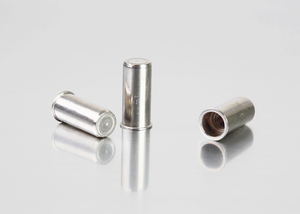Precautions For Rivet Fasteners Thread Production
Body
The thread production of rivet fasteners and striped rivet nuts usually uses cutting, turning, milling, grinding, and other processes. Tapping is the most widely used internal thread processing method, especially for small-sized internal threads. The only way. Tapping is usually divided into two types: manual tapping and machine tapping.
Currently, manual threads are still very popular, because, in actual production, some threaded holes are not suitable for machine tapping due to the position or shape of the parts. Because the diameter of the threaded hole is small, the strength of the tap is low, and it is easy to damage the tap by mechanical tapping. Usually, hand tapping is often used. However, the quality of hand tapped threads is greatly affected by human factors. Therefore, only the correct tapping method can be used to ensure the processing quality of hand tapped threads.
The first point is that the workpiece must be clamped correctly. Generally, the side of the workpiece to be tapped should be placed in a horizontal or vertical position. It is convenient to judge and keep the tap perpendicular to the bottom surface of the workpiece.
The second point is that when the initial position of the tap is to start the tap, you should align the tap, then use one hand to align the tap to the center, and gently rotate the hinge lever with the other hand. Observe from the front or side whether the tap is perpendicular to the bottom surface of the workpiece, and use a ruler to correct it if necessary.
The third point is that if you start tapping by mistake, you can unscrew the tap and use a double cone to correct it, and then tap the head taper hole. When the cutting part of the tap enters the workpiece, no axial force is required. Just tighten it naturally.
The above is part of the preventive measures for a series of rivet nuts (such as knurled rivet nut ) during the thread manufacturing process.









Comments